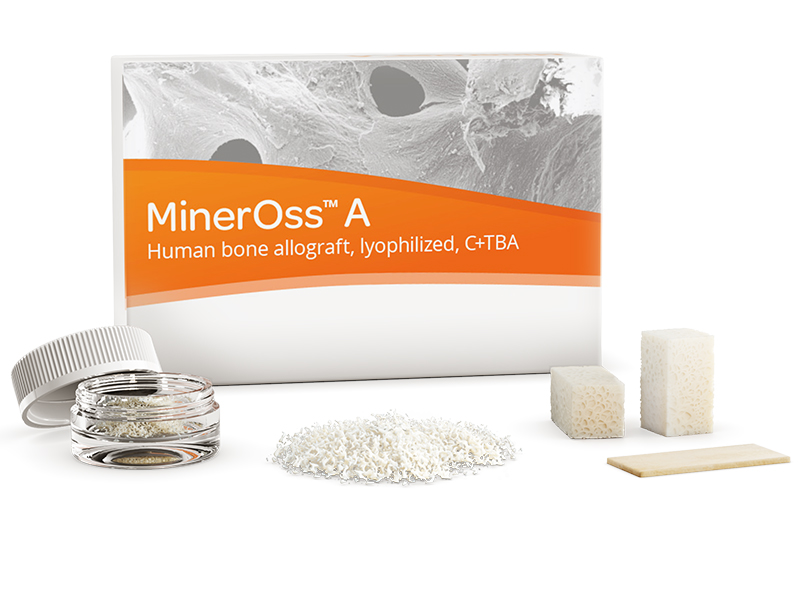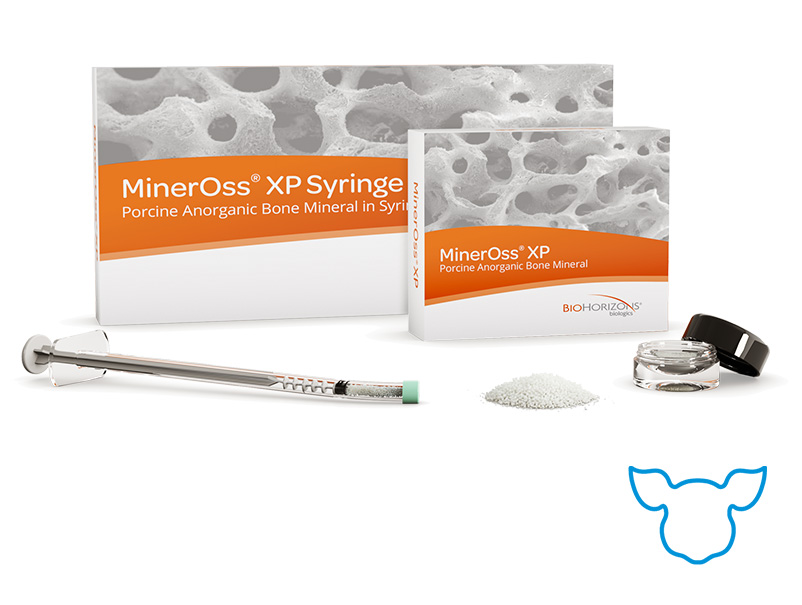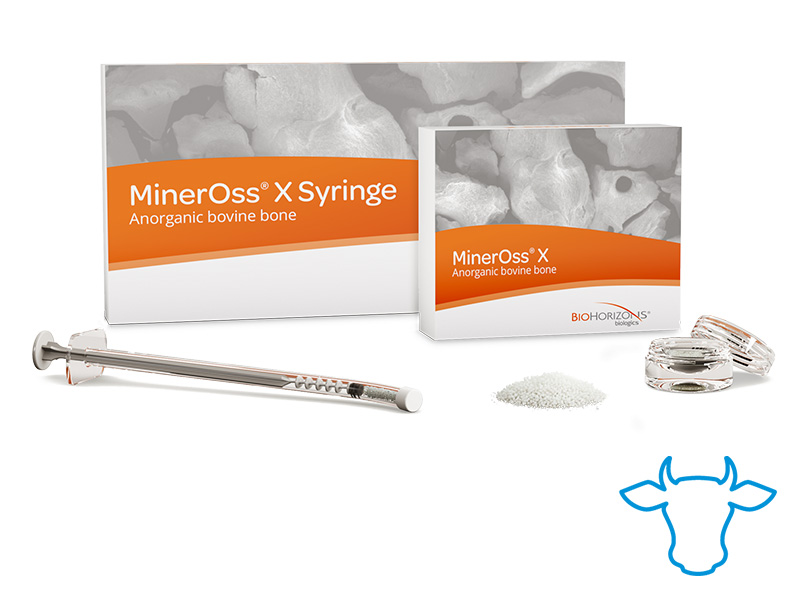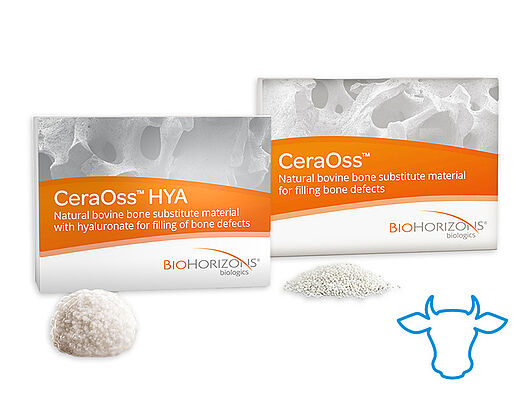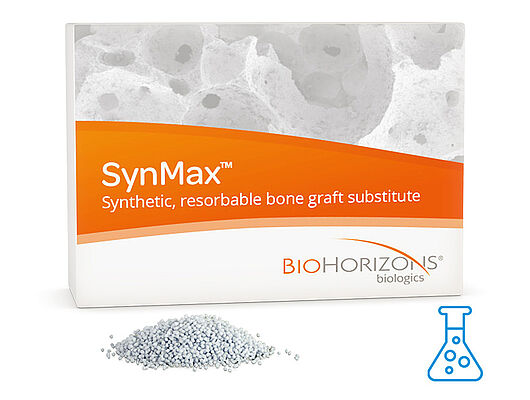Bone substitute materials
MinerOss® A, MinerOss® XP, MinerOss® X, CeraOss® HYA, CeraOss® y SynMax®
Both the ingrowth of surrounding bone tissue and the promotion of the development of low differentiated progenitor cells in bone cells are to be supported by a bone substitute material. The chemical, physical, and mechanical properties are important characteristics of a bone substitute material and define its suitability for clinical application.
MinerOss A is an allograft made from human donor bone. Scientific studies have shown that allografts are most similar to the patient‘s autologous bone in use. They integrate quickly and have the potential for remodeling.1-5
MinerOss XP and MinerOss X combine all these properties. They exhibit a slow resorption rate (source: Guarnieri et al. Regenerative Biomaterials, 2017, 1-4) and allow substantial new bone formation. Additional bone mineral of bovine origin exists both as pure granules (CeraOss) and as a mixture of granules with hyaluronic acid (CeraOss HYA). The synthetic SynMax granules offer dentists an alternative to bone substitute materials of human or animal origin thus expanding the treatment spectrum.

